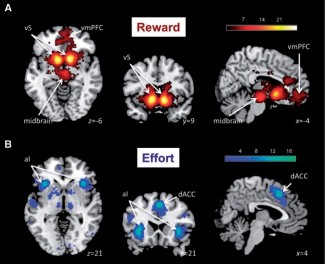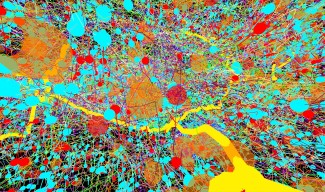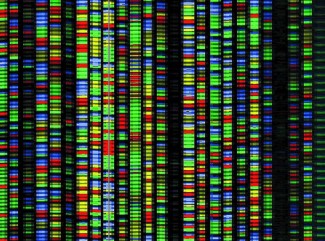A study by the Brain Institute (ICM/Inserm/CNRS/Sorbonne University/AP-HP) establishes for the first time the link between the onset of cognitive fatigue and the accumulation of a neurotransmitter called glutamate in a particular region of the brain – the lateral prefrontal cortex. Unable to eliminate this molecule that hinders its function, the brain is no longer able to produce any additional effort. This discovery would explain why we are more impulsive in our choices when we are tired. It could also have implications for a better understanding of some pathologies such as burn-out.
What is cognitive fatigue?
It can be defined by the state in which we can sometimes find ourselves, after several hours of demanding cognitive tasks, with a feeling of saturation and then unable to think further or make a decision.
In a first work published in 2016, researchers from the Motivation, Brain and Behavior team, led at the Brain Institute by Mathias Pessiglione (DR2 Inserm) had already demonstrated that cognitive fatigue could lead us to prefer immediate rewards – such as the pleasure of eating chocolate – to delayed, longer-term rewards, such as not gaining weight. Scientists had then demonstrated that this fatigue was the result of a decrease in activity, over the course of the day, of a particular brain region: the left lateral prefrontal cortex. But they still had to understand why this region was no longer active when we are tired.
What happens in the brain?
Through a new collaborative work, published in the journal Current Biology, Mathias Pessiglione and Dr. Fanny Mochel (neurology AP-HP and researcher Sorbonne University) continued these investigations by looking for the biological causes of cognitive fatigue.
They used an imaging technique called magnetic resonance spectroscopy, which allow to quantify different metabolites in the brain. They quantified several molecules in the lateral prefrontal cortex of the participants, who were asked, depending on their group, to perform tasks requiring a lot of attention or simpler cognitive tasks.
The scientists found that the accumulation of glutamate in the lateral prefrontal cortex increases over the course of the day, but only when performing attentionally demanding work.
What is Glutamate?
Glutamate is an essential excitatory neurotransmitter of the central nervous system. Under normal conditions and when cognitive tasks are spaced out, there is a spontaneous mechanism of draining, which ensures a regulation of the glutamate level. However, when glutamate levels are too high, it accumulates at the synapses – the contact zones between two neurons – and, becoming harmful and preventing the normal activation and proper functioning of the lateral prefrontal cortex.
New avenues of research
The conclusions of this study are to be compared with other work carried out by the same researchers with overtrained athletes, in whom they showed the occurrence of a similar fatigue. The underlying biological mechanism is therefore probably not specific to “intellectual” tasks, but comes into play during any task requiring intense and prolonged attentional control, i.e. any activity that cannot be based on already well-honed automatisms.
These results could open new avenues of research towards a better understanding of pathological conditions involving states of mental fatigue, such as burn-out.
Sources
Wiehler A, Branzoli F, Adanyeguh I, Mochel F, Pessiglione M. A neuro-metabolic account of why daylong cognitive work alters the control of economic decisions. Curr Biol. 2022 Aug 22;32(16):3564-3575.e5. doi: 10.1016/j.cub.2022.07.010. Epub 2022 Aug 11. PMID: 35961314.

The team "Motivation, Brain and Behaviour" combines three complementary approaches: cognitive neuroscience in humans, neurophysiology in monkeys and computational modelling, which is essential to quantitatively link the different levels of...
Read more






